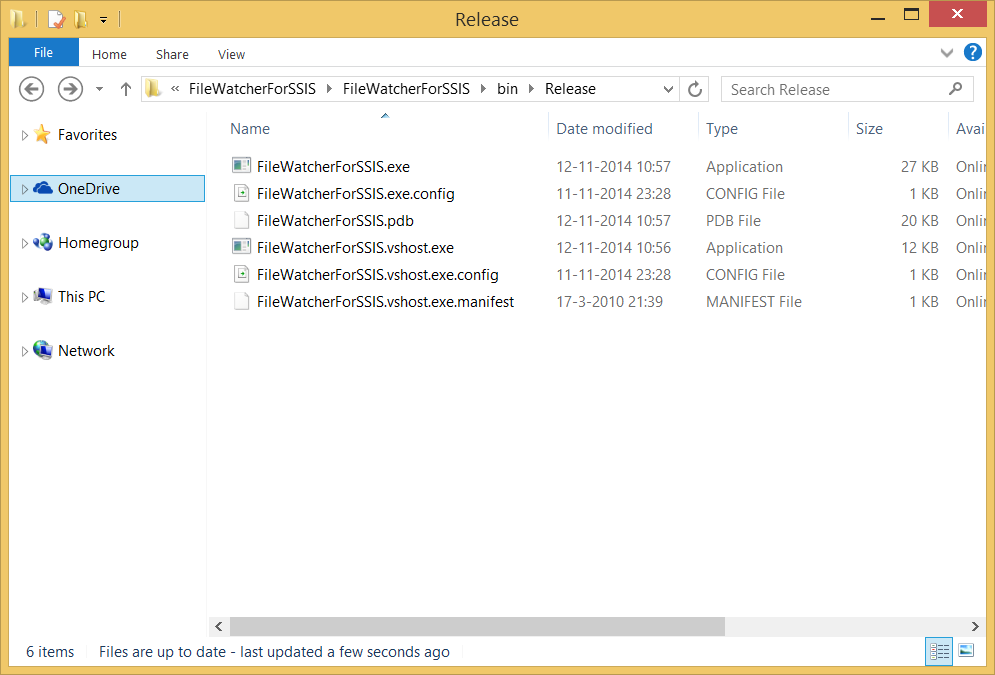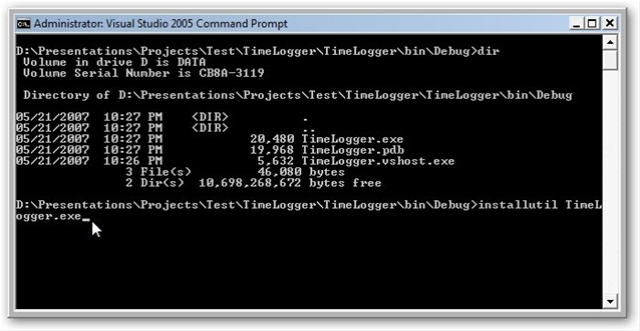How To Install Windows Service Without Installutil Exe
- Windows Installutil Location
- Install Windows Service.net
- Install Windows Service Using Installutil
- How To Install Windows Service Without Installutil Exempt
- Register Windows Service
I have a standard .NET windows service written in C#.
Install windows service c# without installutil - How to install a windows service programmatically in C#? 4 Answers Ok, here is what REALLY worked for me, it has been tested on multiple machines with different OS ( Vista, XP, Win2k, Win2003 server ).

Can it install itself without using InstallUtil?
Should I use the service installer class? How should I use it?
I want to be able to call the following:
MyService.exe -install
and it will have the same effect as calling:
InstallUtil MyService.exe
Yes, that is fully possible (i.e. I do exactly this); you just need to reference the right dll (System.ServiceProcess.dll) and add an installer class…
Here’s an example.
Take a look at the InstallHelper method of the ManagedInstaller class. You can install a service using:
This is exactly what InstallUtil does. The arguments are the same as for InstallUtil.
The benefits of this method are that it involves no messing in the registry, and it uses the same mechanism as InstallUtil.
You can always fall back to the good old WinAPI calls, although the amount of work involved is non-trivial. There is no requirement that .NET services be installed via a .NET-aware mechanism.
To install:
- Open the service manager via
OpenSCManager. - Call
CreateServiceto register the service. - Optionally call
ChangeServiceConfig2to set a description. - Close the service and service manager handles with
CloseServiceHandle.
To uninstall:
- Open the service manager via
OpenSCManager. - Open the service using
OpenService. - Delete the service by calling
DeleteServiceon the handle returned byOpenService. - Close the service and service manager handles with
CloseServiceHandle.
The main reason I prefer this over using the ServiceInstaller/ServiceProcessInstaller is that you can register the service with your own custom command line arguments. For example, you might register it as 'MyApp.exe -service', then if the user runs your app without any arguments you could offer them a UI to install/remove the service.
Running Reflector on ServiceInstaller can fill in the details missing from this brief explanation.
P.S. Clearly this won’t have “the same effect as calling: InstallUtil MyService.exe” – in particular, you won’t be able to uninstall using InstallUtil. But it seems that perhaps this wasn’t an actual stringent requirement for you.
Here is a class I use when writing services. I usually have an interactive screen that comes up when the service is not called. From there I use the class as needed. It allows for multiple named instances on the same machine -hence the InstanceID field
Sample Call
The class itself
The above examples didn’t really work for me, and the link to the forum as a #1 solution is aweful to dig through. Here is a class I wrote (in part), and the other bit is merged from this link I found buried somewhere
To install a service, run the InstallAndStart command as follows:
Make sure the account that is running the program has permission to install services. You can always ‘Run As Administrator’ on the program.
I have also included several commands for non-api access which do not install or remove services, but you can list them and control several (start, stop, restart). You really only need to elevate permissions for installing or removing services.
There are a couple of commands for getting and setting environment variables as well, such as OPENSSL_CONF or TEMP. For the most part, the parameters and method names should be pretty self-explanatory.

In the case of trying to install a command line application as a Windows service try the ‘NSSM‘ utility. Related ServerFault details found here.

Process QProc = new Process();
QProc.StartInfo.FileName = “cmd”;
Windows Installutil Location
QProc.StartInfo.Arguments =”/c InstallUtil “+ “””+ filefullPath +”””;
QProc.StartInfo.WorkingDirectory = Environment.GetEnvironmentVariable(“windir”) + @”Microsoft.NETFrameworkv2.0.50727”;
Tags: .net, service, windows
I have created a windows service in vb.net. Is there anyway i can create an installation for it that does not require installutil to be used?
3 Answers
Installutil is necessary, but to make things easier, you can create a Setup project, so that you simply run an .msi to install the service. (This uses installutil under the hood, but it greatly simplifies installation.)
One walkthrough is here: http://support.microsoft.com/kb/816169
Install Windows Service.net
And another is here: http://msdn.microsoft.com/en-us/library/zt39148a(VS.80).aspx
The main difference between the two is the amount of code in the samples. They both walk you throuigh the same process.
The articles linked to are old, but still apply in VS2010. I used the second article to walk through the process for a VS2010 service just last week.
Install Windows Service Using Installutil
DavidDavidWhy do you want to avoid installutils?
How To Install Windows Service Without Installutil Exempt
You could try using the sc command, as in sc create ...
EDIT: Here's an MSDN page for it: http://support.microsoft.com/?kbid=251192
Register Windows Service
jglouiejglouieYou can always do it with registry entries.
The keys are found in HKLMSYSTEMCurrentControlSetservices
The key name you create is the embedded name of the service on your service handler. The following values are relevant:
DisplayName = text that gets displayed in the services manager
ImagePath = FQ Filename of service executable
Start (DWORD) = startup type (3 = autostart)
DelayedAutoStart (DWORD) = (1 = delayed)
WOW64 (DWORD) = (0 = 64-bit app, 1 = 32-bit app)
ErrorControl (DWORD) = 0
ObjectName = {username} to run under (LocalSystem for system account)
There are lots of other values, but that should get you started.
Matt Wilko